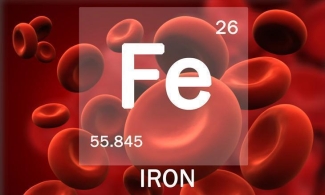Dr. Chantale Pambrun explains the importance of iron wellness
Wednesday, March 29, 2017 Ross FitzGerald
Iron is an essential element for producing hemoglobin (the molecule that helps transport oxygen around your body). To promote donor health, we recently made changes to donor eligibility based on new information our researchers have learned about mitigating iron deficiency in blood donors.
On March 5, Canadian Blood Services increased the minimum allowable hemoglobin level for male donors from 125 g/L to 130 g/L. Back in December 2016, the interval between donations for female donors was increased from 56 days to 84 days.
Read more on our Professional Education website:
The importance of iron for whole blood donors: a Canadian perspective
Dr. Chantale Pambrun, medical consultant, donor and clinical services with Canadian Blood Services explains why we made these changes and provides some more information about why donor iron wellness is important.
As Dr. Pambrun explains, iron deficiency anemia is when you have low amount of hemoglobin. Red cells are packed with hemoglobin, and the role of hemoglobin is to take the oxygen from your lungs and circulate it throughout your body to provide oxygen to the vital cell activities. It also takes waste away from your cells and brings it back to your lungs to be expelled.
“When individuals have iron deficiency (or iron deficiency anemia), they may experience decreased exercise tolerance, increased shortness of breath with activity,” explains Dr. Pambrun, “possibly can also have a decrease in concentration or changes in mood.”
Learn more:
Ferritin findings: investigating iron and impacts on donors
Tales from the engineering side of things
The importance of iron for whole blood donors: a Canadian perspective
Canadian Blood Services – Driving world-class innovation
Through discovery, development and applied research, Canadian Blood Services drives world-class innovation in blood transfusion, cellular therapy and transplantation—bringing clarity and insight to an increasingly complex healthcare future. Our dedicated research team and extended network of partners engage in exploratory and applied research to create new knowledge, inform and enhance best practices, contribute to the development of new services and technologies, and build capacity through training and collaboration.
The opinions reflected in this post are those of the author(s) and do not necessarily reflect the opinions of Canadian Blood Services.
Related blog posts
Health screening, education and donor testing help to ensure donors are healthy enough to give and that their gift doesn’t cause harm to patients.
When a significant change to donor eligibility occurs, like the recent eligibility changes related to hemoglobin levels and iron health, we need to understand in advance the impact it could have on blood collections. Our in-house engineer, John Blake, did some nifty number crunching and estimated that the change would mean about 35,000 fewer donations collected in a year — hence the push for new donors to step forward to help fill the gap.

